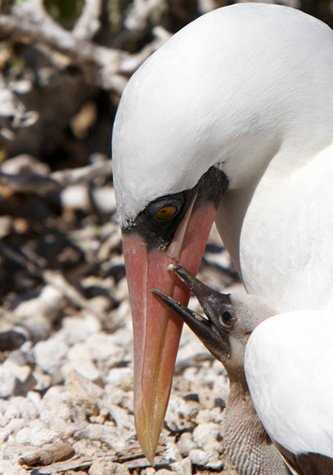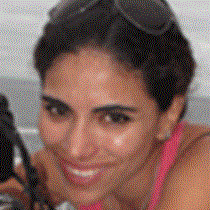This morning, we reached Tower or Genovesa Island at sunrise. This small island lies north of the Equator line. The passage from Santiago to Genovesa Island was a little rocky last night, but it was really worth it, as Genovesa is always an spectacular visitor site.
Our ship dropped anchor near the cliffs of the huge submerged caldera of this ancient dormant volcano, now surrounded by hundreds of birds, such as red footed boobies, Nazca boobies, swallowed tailed gulls, red billed tropic birds and shearwaters, among many others.
Genovesa has two sites to visit: Darwin Bay and Prince Phillips’ Steps. The beach, were we land in the morning, is a white coral sand beach, a couple hundred yards in length, with sea lions and many birds nesting here and there, some very close to the trail. This morning we had the chance to land and immediately after, see the entire process of a baby swallow tailed gull coming out of the egg, just a couple of meters from us! What a fantastic experience for our group. Then, we saw dozens of red footed boobies, some nesting, others courting and some juveniles hanging near the nests waiting to be fed by their parents. On the bushes there were several young great frigate birds and we could easily see the main morphological characteristics of the great frigate species.
Following the trail, many more Nazca boobies and swallowed tailed gulls were nesting or incubating their eggs. Galapagos doves were feeding on seeds from the ground, and many yellow crown night herons were looking after fiddler crabs or little fish in the tide pools.
After the magnificent morning, it was time for our last deep water snorkel outing, a good one with new species of fish, sea turtles and fur seals.
Then, we were back on board for the departure briefing and lunch, and soon after we began our last outing to visit Prince Phillips’ steps, named after the Duke of Edinburgh who visited the islands in the 1960s. This place is outstanding. Right after climbing the steps over the cliff, we found ourselves in the middle of a colony of red and Nazca boobies, a palo santo forest, and soon a big lava flow overlooking the outside border of the cliff, with a huge colony of storm petrels, Nazca boobies and frigate birds. It was very windy and took us a while to spot a very elusive and well camouflaged short eared owl, hidden on a little rock cave.
With our last pictures of the owl and the beautiful scenery, the sun setting behind us, the colors and sounds of the island – it was time to leave and treasure all the experiences and memories of this incredible week.









